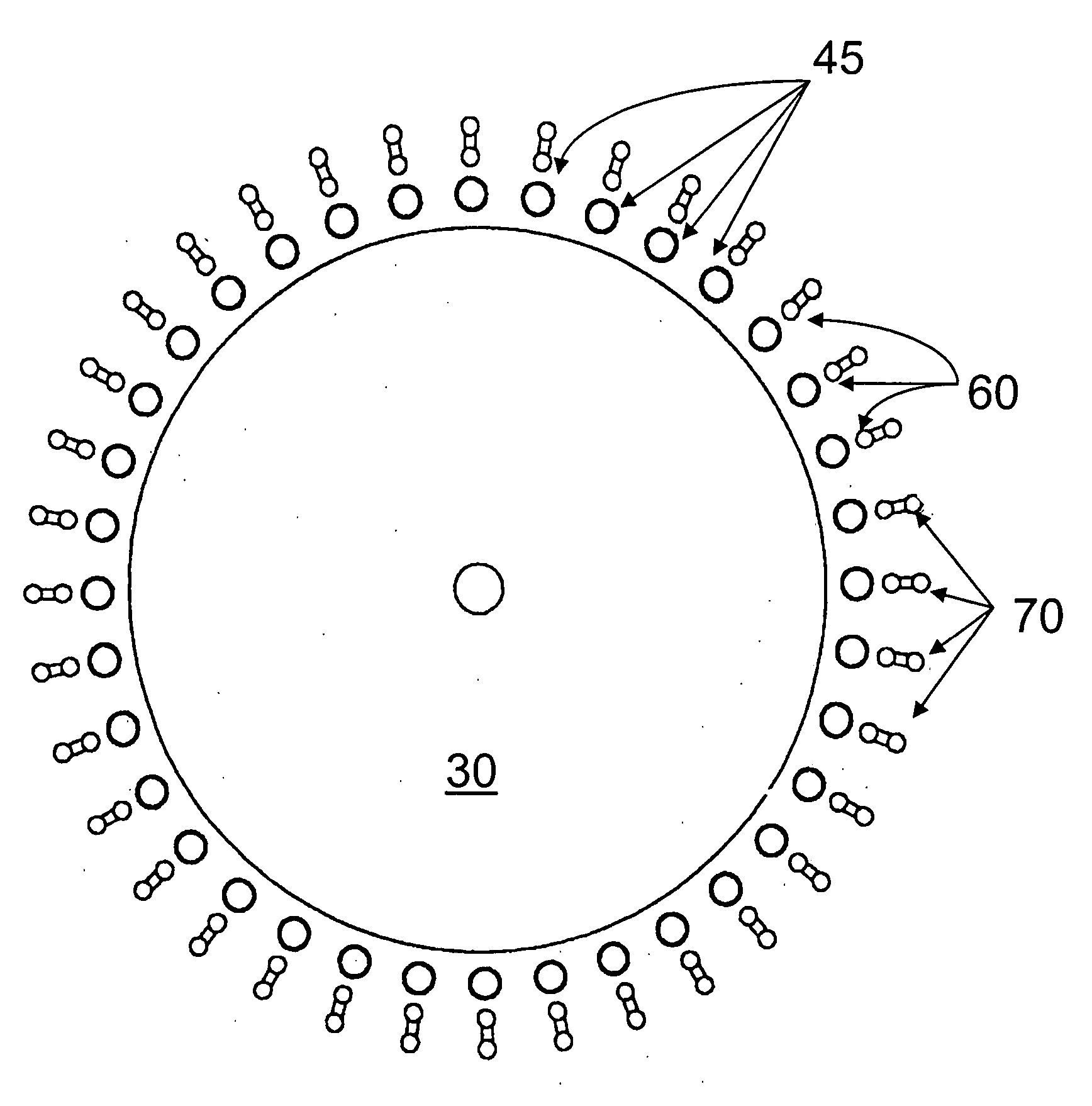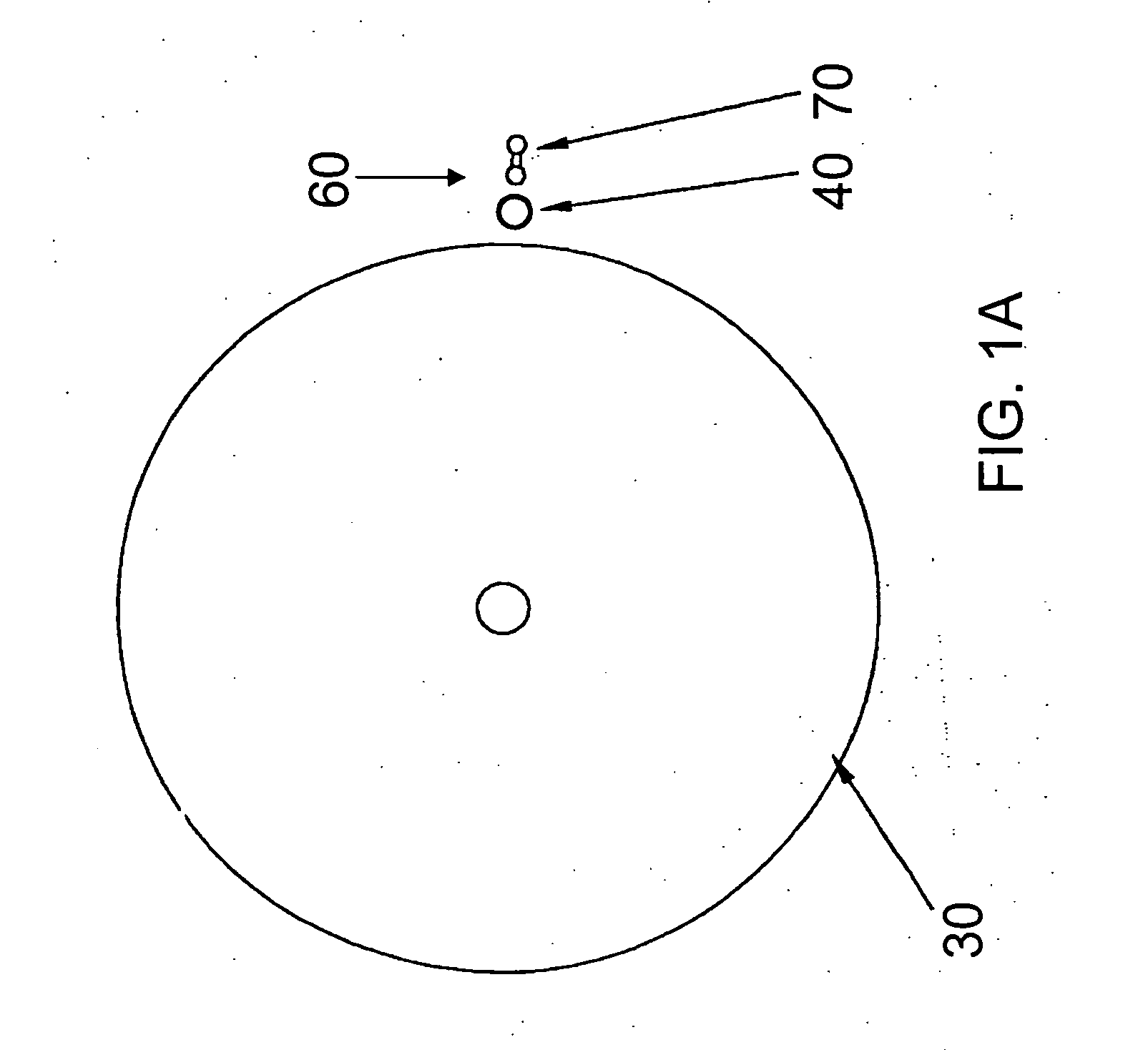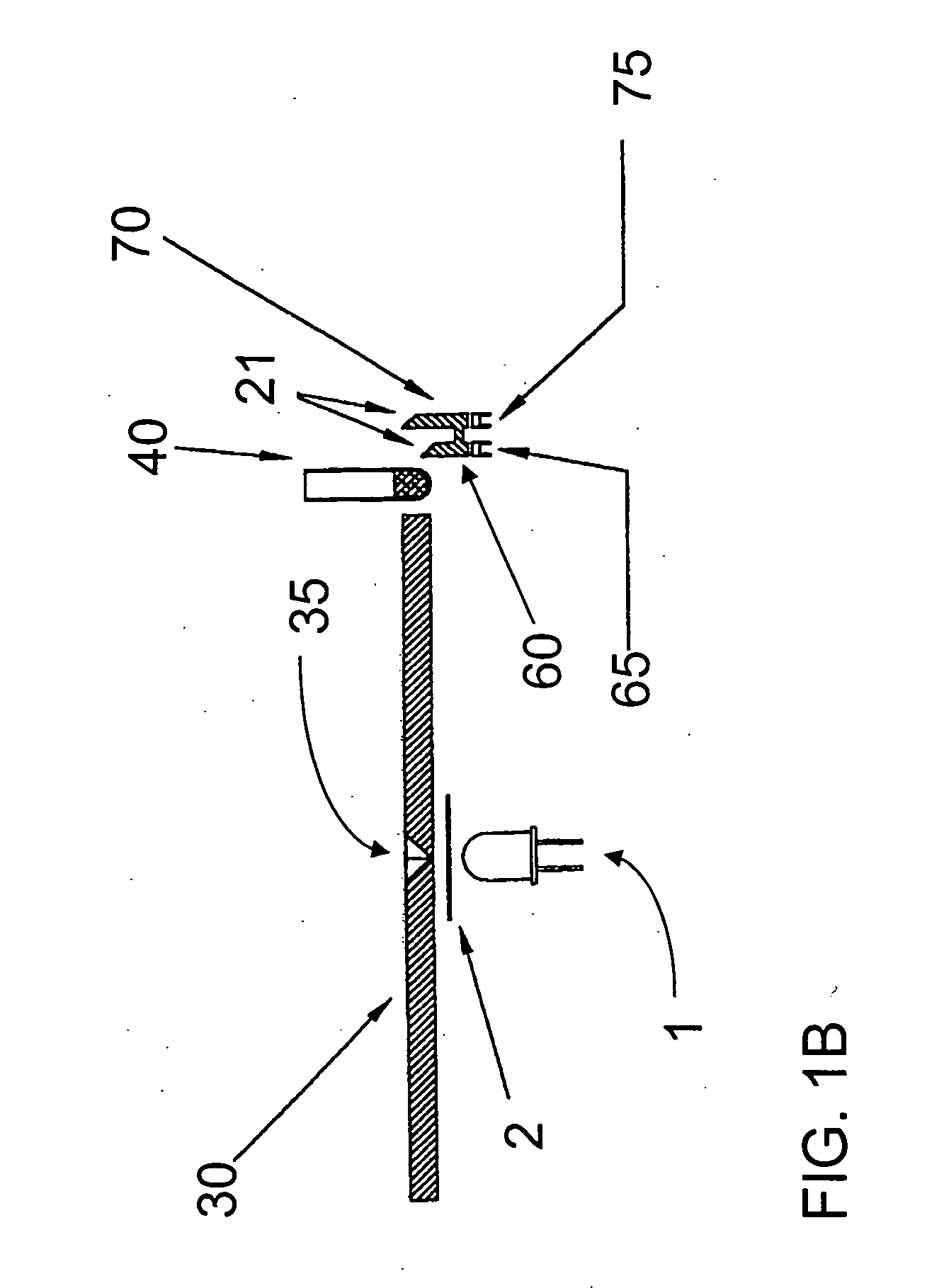Reader for conducting assays
a technology of reading device and conducting assay, which is applied in the direction of color/spectral property measurement, material analysis, instruments, etc., can solve the problems of complicated temperature control, limited operation lifetime, and large amount of heat, so as to reduce the net weight of the device, reduce the power demand of the device, and reduce the calibration demand of the operation.
- Summary
- Abstract
- Description
- Claims
- Application Information
AI Technical Summary
Benefits of technology
Problems solved by technology
Method used
Image
Examples
Embodiment Construction
[0036] Referring now to the drawings, wherein like reference numerals designate identical or corresponding parts throughout the several views, and more particularly to FIG. 1 thereof, which illustrates an exemplary optical system according to the present invention. The illustrated optical system generates light, radially guides it to one or more vessels containing an analyte, transmits the light through the vessel and / or the analyte, and then pipes the light to one or more light transducers where it is transduced. As used herein, radial guiding refers to the transmission of light to plural vessels along plural optical paths, wherein the transmittance along the various paths is substantially equal. This situation is possible to implement using a circular (or arcular) waveguide with a source located at the center, hence giving rise to the term “radial guiding.”
[0037] In FIGS. 1A and 1B, LED source 1 generates and emits photons, and can also optionally serve to collimate and / or focus t...
PUM
| Property | Measurement | Unit |
|---|---|---|
| center wavelength | aaaaa | aaaaa |
| center wavelength | aaaaa | aaaaa |
| temperature | aaaaa | aaaaa |
Abstract
Description
Claims
Application Information
 Login to View More
Login to View More - R&D
- Intellectual Property
- Life Sciences
- Materials
- Tech Scout
- Unparalleled Data Quality
- Higher Quality Content
- 60% Fewer Hallucinations
Browse by: Latest US Patents, China's latest patents, Technical Efficacy Thesaurus, Application Domain, Technology Topic, Popular Technical Reports.
© 2025 PatSnap. All rights reserved.Legal|Privacy policy|Modern Slavery Act Transparency Statement|Sitemap|About US| Contact US: help@patsnap.com



